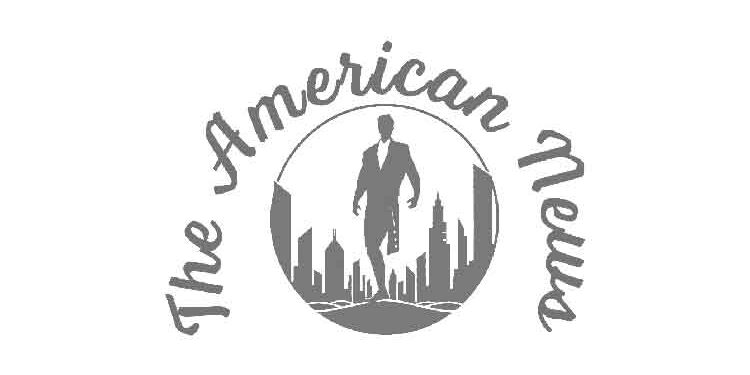On the second floor of the Museum of the City of New York (MCNY), a sign announces that visitors are about to immerse themselves in Byzantine Bemb├®, a show that tells the stories of the cityŌĆÖs Latin American diaspora. The exhibit uses the mosaics, watercolors and drawings of Puerto Rico-born artist Manny Vega.
This exhibition might never have existed. Probably no one would have taken it upon themselves to look for VegaŌĆÖs scattered works, much less bring them to the MCNY. It only exists because ├üngel Monxo L├│pez exists: heŌĆÖs the ŌĆ£first permanent curator of colorŌĆØ since the museum was founded 100 years ago.
ŌĆ£ItŌĆÖs kind of embarrassing that IŌĆÖm the firstŌĆ” especially when the Museum is located here, in El Barrio,ŌĆØ Monxo notes. HeŌĆÖs a 51-year-old Puerto Rican who came to New York with his wife in the spring of 1999. They arrived with the idea of saving a little money and going on to Belgium, Beirut, or Istanbul to continue their studies about politics and history of the Islamic world. But that never happened: they were seduced by the Big Apple.
Monxo started playing guitar with small rock and jazz groups, while working for 10 years as a cartographer. He also earned a doctorate in Political Science and became an environmental activist in the South Bronx. He bought a house in Mott Haven. He had a daughter. He taught classes. But Monxo has ŌĆö as he says ŌĆö a ŌĆ£restless head.ŌĆØ The time came when he got bored of academia.
ŌĆ£I didnŌĆÖt have space for everything I wanted to do, which had to do with music, with cartography, with the activism I do,ŌĆØ he explains. In 2019 ŌĆö after playing music, researching, teaching courses, co-founding South Bronx Unite and installing solar panels in several community gardens ŌĆö he was selected to work at the Museum of the City of New York as a Mellon Foundation fellow. Last year, he became a full-time permanent curator.
For Monxo, the MCNY ŌĆ£was like a secret that white people had kept just for themselves.ŌĆØ At first, he thought he wouldnŌĆÖt get the job. He confesses this while speaking with EL PA├ŹS in the buildingŌĆÖs cafeteria, where people passing by pause to greet him in English or Spanish. Monxo always answers them in Spanish, which they either understand, or pretend to understand.
Many things are happening at the museum. Never before have all the exhibition texts been bilingual. The audience is younger and more diverse, while the themes are intersectional and more focused on communities, rather than centering New York as ŌĆ£the last Coca-Cola in the desert.ŌĆØ
ŌĆ£I think New York is the most fantastic place on Earth,ŌĆØ Monxo clarifies. ŌĆ£But IŌĆÖve also traveled enough to know that this [is my opinion] and isnŌĆÖt necessarily objectiveŌĆØ.
At least four days a week, youŌĆÖll see Monxo walking the halls of the MCNY. His job consists of reading, studying, researching, speaking with experts, visiting artistsŌĆÖ studiosŌĆ”. but above all, itŌĆÖs about making friends with people. ŌĆ£I do my work my way,ŌĆØ he says. He operates not just as any curator, but as a ŌĆ£curator of community stories.ŌĆØ
Question. What does it mean to be a curator of community stories in New York?
Answer. IŌĆÖm still defining that position, itŌĆÖs a work in progress. But itŌĆÖs basically two things: telling stories that feature the ethnic and racial communities that live and have historically lived in New York. And, whenever possible, bringing in the contributions and the intersections of those communities. ThatŌĆÖs one of my priorities. When I do the exhibitions, I donŌĆÖt decide the argument or the narrative, the themes or the sections. I always let myself be guided by the voices, ideas and concerns that those racial, ethnic, or artistic communities consider important to define themselves.
Q. In your case, which community do you belong to?
A. There are several. The most important community to which I feel I belong is the community of my environmentalist neighbors in the South BronxŌĆ” a community of ideological friendship, letŌĆÖs say. Equally important is the artistic and cultural community in which I move, which includes the museum, but also the Clemente Cultural Center, where most of us are Latino, although we have everything. And thirdly, I would define myself as Puerto Rican. But I think that one of the most fantastic and beautiful things about New York is that itŌĆÖs a place that forces us all to break with that and to redefine ourselves. Sometimes, it breaks our identity. Because here, you encounter the worldŌĆ” and the world is a wonderful place, with wonderful people from everywhere, with stories from everywhere. That density, the closeness that the city forces on you, makes you embrace and welcome that disorder on an identity level.
Q. What if New York makes us believe that the world is here, but itŌĆÖs just an illusion, because the world is much more than this?
A. Obviously, the world isnŌĆÖt here. But itŌĆÖs the place that IŌĆÖve seen where youŌĆÖll have the closest doors to the rest of the world. There are so many people, from so many placesŌĆ” life is lived at a fast pace, with the relative freedom that people have to be who they are, both individually and collectively. You can be inside your own community and also step out. I love being among Puerto Ricans and I love going outside [of the community] as well.
Q. How does a Latin curator make his way through so many communities?
A. My grandmother used to say that a person has two ears and one mouth, because you have to listen twice as much as you should speak. So, [I do my job] by listening to peopleŌĆ” and listening means being really interested in the stories they want to tell, the topics that people want to talk about and forgetting a little about what I want. And when you have that attitude, the possibility of friendship arises.
YouŌĆÖre not trying to impose your voice and narrative. ItŌĆÖs key that communities ŌĆö and especially individuals ŌĆö see that what you want to do is actually open up spaces for their stories and what they want to say about themselves, so that this can be the work that ends up in the gallery.
Patience and time are also important. My next exhibition, scheduled for next year, is about the founding of New York 400 years ago by the Dutch, but seen from the perspective of the Lenape, the Indigenous people who had lived in this area for more than 10,000 years. These Natives are still alive; theyŌĆÖre all over the United States. ThereŌĆÖs the prejudiced notion that itŌĆÖs difficult to work with Indigenous people, but in reality, cultural institutions approach them to extract a story. ThereŌĆÖs no interest in listening to them, or giving them a voice, or opening up a space for that voice to come out. IŌĆÖve been working with Native American artists for almost two years and IŌĆÖve become their friend. And it was difficult: theyŌĆÖre very protective of their history, of their voice, very particular about not having anyone speak for them. And that takes time.
Q. How do you bring the richness of the community to the institution?
A. Through diversity. Even though weŌĆÖre not an Indigenous institution, the Lenape ŌĆö when they found out that I and the other curator IŌĆÖm working with are Puerto Rican and from the Bronx ŌĆö they opened the doors to us. That alone earned us points. The fact that weŌĆÖre Puerto Rican ŌĆö Latino ŌĆö immediately gives that community confidence. If thereŌĆÖs no diversity behind a museum, if a museum doesnŌĆÖt reflect the diversity of the city, trust wonŌĆÖt develop. ThatŌĆÖs been a problem that museums in the United States and here in New York have historically had.
Q. You say that Indigenous communities accept you for being Puerto Rican. And has it happened the other way around, with communities that donŌĆÖt look at you the same way for being Latino?
A. There are no communities like that: there are just people who are like that. IŌĆÖve never had the experience of not feeling welcome in a community or group, but IŌĆÖve felt that way from people. Especially people of a certain ageŌĆ”there are people whoŌĆÖve even questioned me, asking if I really have a doctorate. Like, what the fuck?
This is the whitest place IŌĆÖve ever worked. Although, to be fair, the changes in recent years are notable. IŌĆÖve always worked in very diverse environments. At the museum, theyŌĆÖve always treated me extraordinarily well, but this is the first time IŌĆÖve noticed that IŌĆÖm in such a white environment.
Q. How important is it to be the first permanent curator of color?
A. When I arrived here in 2019, the museum was already in the process of addressing the problem of the lack of diversity, which isnŌĆÖt only in terms of the employees and the staff, but in the stories that are told. Since I arrived, IŌĆÖve worked to buy artworks and collect artworks by artists of color, but not exclusively. I purchase from people who would have a hard time selling their works, especially Latinos.
In that sense, thereŌĆÖs an impact. I work like an animal. I know that IŌĆÖve earned the position I have, I deserve it, but IŌĆÖm also here a little bit by chanceŌĆ” and very much because of the anonymous work that a lot of people did before I arrived. ItŌĆÖs somewhat dramatic, because you feel a responsibility towards communities and towards individuals that other colleagues of mine donŌĆÖt feel. I live in fear of disappointing my people ŌĆö the Latinos, Puerto Ricans, Puerto Ricans from here in El Barrio ŌĆö who know that, with me at the museum, they have an ear within this institution. They feel very proud of my success, and thatŌĆÖs why IŌĆÖm always very careful not to do anything that could embarrass those people.
Sign up for our weekly newsletter to get more English-language news coverage from EL PA├ŹS USA Edition
Source link : http://www.bing.com/news/apiclick.aspx?ref=FexRss&aid=&tid=66fc062710254abdbe6a4c1e4d562c07&url=https%3A%2F%2Fenglish.elpais.com%2Fculture%2F2024-09-28%2Fangel-monxo-lopez-the-first-latino-curator-of-the-museum-of-the-city-of-new-york-i-dont-want-to-let-my-people-down.html&c=8540040447075827388&mkt=en-us
Author :
Publish date : 2024-09-27 18:08:00
Copyright for syndicated content belongs to the linked Source.












